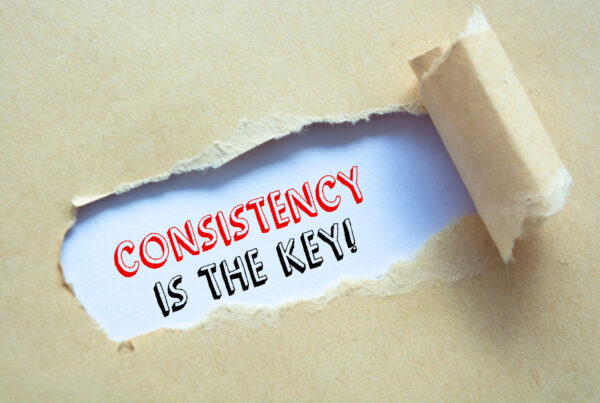Last Updated on May 28, 2023 by Dave Schoenbeck
Keith J. Cunningham is a world-renowned author, speaker, and entrepreneur with a proven track record of business success. His entire body of work provides a blueprint for a successful business that entrepreneurs can follow, particularly his aptly-named book, The Ultimate Blueprint for an Insanely Successful Business. Here are some takeaways that you should know:
What keeps a business successful?
Keith’s approach combines simple, doable concepts and an extraordinary focus on understanding what is essential in business measurements. He is an expert at simplifying critical components to create a blueprint for a successful business.
The Ultimate Blueprint for an Insanely Successful Business provides practical advice and strategies for building a thriving organization. Initially published in 2011, it quickly became a staple by flipping the traditional idea of “growth = profit” on its head.
Cunningham doesn’t encourage business owners to focus on growth. Instead, the book asks: what did big businesses do that allowed them to grow in the first place, and how can you recreate those factors in your company? Here are some of the fundamental concepts of his blueprint for a successful business:
- “What gets measured is what gets done. What gets measured is what gets managed.” With this quote, Cunningham establishes the importance of measuring the right metrics in your business. If you do not measure what matters, you cannot know what needs improvement or how.
- Profits are a theory, but cash is a fact. One of the most important lessons from The Ultimate Blueprint is the importance of focusing on cash flow, not just profits. Cunningham recommends regularly reviewing your income statement, balance sheet, and cash flow statement and using this information to make strategic decisions about your business.
- Cash is still king. Cash can be used for operating, investing, and financing. Cash is what powers a business, not profit. To generate more cash for your business, lowering expenses is more manageable than increasing revenue. Therefore, you should only spend money on things that help you make more money.
- To get the desired results, get clear on where you are going. The success of the business depends on having quantifiable, cohesive goals. When you look at the blueprint for a successful business, you can see that this is a common denominator in companies that have scaled over time.
- Identify the root problem that is blocking progress toward your goal. Cunningham emphasizes that no matter how well you plan, unexpected obstacles will inevitably arise while building a business. Having a plan B in place can minimize the impact of these challenges and keep your business on track.
- Tackle the problem and measure your progress. It’s not enough to make progress if you aren’t also measuring it. Charging blindly forward is not strategic and isn’t sustainable. A significant component of Cunningham’s blueprint for a successful business depends on measuring the right metrics.
- Most business owners focus more on adding new clients and are lousy at keeping existing ones. However, it’s much more cost-effective to upsell your current clients than to seek something new. Don’t just settle for customer service—aim for customer delight.
How to Measure What Matters
Keith’s blueprint for a successful business is all about metrics. He provides several vital formulas that will help you truly understand your business. These formulas, when taken together, create your business’s financial scoreboard.
Cunningham quotes Warren Buffet on his website: “If you can’t read the scoreboard, you don’t know the score. If you don’t know the score, you can’t tell the winners from the losers.” This scoreboard will give you an accurate picture of your business’s finances.
Here are the formulas for your blueprint for a successful business, along with questions to consider:
How effective are you at acquiring assets and converting those assets into sales?
Sales/Assets = Effectiveness %
How efficient are you at converting sales into profits?
Profits/Sales = Efficiency %
How effective and efficient are you at producing profits?
Effectiveness x Efficiency = Return on Assets
Or, stated another way:
Sales/Assets x Profits/Sales = Profits/Assets = Return on Assets
How well do you convert profits into cash flow?
Operating Cash Flow/Profits = Productivity %
How well do you exploit effectiveness, efficiency, and productivity?
Effectiveness x Efficiency x Productivity = Operating Cash Flow/Assets
When you have all of these numbers, you can ask yourself the following questions to create your blueprint for a successful business:
- What is the effectiveness, efficiency, and productivity of your business?
- How do your business’s effectiveness, efficiency, and productivity compare with prior periods? This can be quarters, months, or years, depending on what makes sense for your industry.
- Is there a way to increase sales on the same amount of assets, or can you reduce the number of assets and maintain the same sales?
- Are assets and sales effectively and efficiently producing the maximum level of profits?
- Is there a way to increase profitability by decreasing expenses? Are there ways to eliminate bloat and cut costs while maintaining output?
- Are assets, sales, and profits producing the maximum operating cash flow?
- Is each of these relationships improving? If not, what can you do to improve these ratios?
Overall, The Ultimate Blueprint for an Insanely Successful Business can help you determine which metrics are essential in your business, track them, and watch them grow. The book gives you a solid blueprint for a successful business when you feel like your company owns you instead of the other way around.
Implementing the tips Cunningham lays out can provide a much-needed boost when you feel overwhelmed or out of touch with the day-to-day happenings of your business. But ultimately, your business’s success or failure lies in how you and your team manage these crucial metrics.
Want to create your blueprint for a successful business? Buy this book, read it, and calculate your business’s formulas. Keeping up with your leadership development is essential to learn more about maintaining continued business success. Click here to sign up for my newsletter and read my free weekly articles about management, entrepreneurship, business ownership, and more.
Coach Dave
- If You Are Considering Starting a Business, Read the Book The E-Myth Revisited First - October 16, 2025
- Here’s a Must-Read Book: The Four Disciplines of Execution - October 9, 2025
- Don’t Procrastinate: It’s Time to Do Company Succession Planning - October 2, 2025



